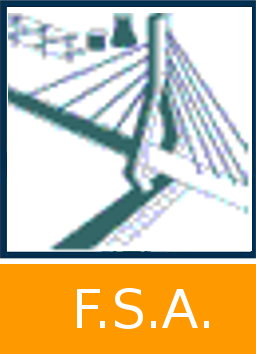Deformations of ship sections during fabrication, causes and remedies
Eisawy, Mohamed 
Promotor(s) : Lindemann, Thomas
Date of defense : 13-Sep-2021 • Permalink : http://hdl.handle.net/2268.2/13647
Details
| Title : | Deformations of ship sections during fabrication, causes and remedies |
| Author : | Eisawy, Mohamed 
|
| Date of defense : | 13-Sep-2021 |
| Advisor(s) : | Lindemann, Thomas |
| Committee's member(s) : | Kaeding, Patrick
Teodor, Florin Urbanski, Tomasz |
| Language : | English |
| Number of pages : | 62 |
| Keywords : | [en] Finite Element Method, FE Analysis, Structural analysis, Lifting simulation, Hoisting simulation, FEMAP, Ship section, Ship block, Deformations, Sling angle. |
| Discipline(s) : | Engineering, computing & technology > Mechanical engineering |
| Target public : | Researchers Professionals of domain Student |
| Institution(s) : | Université de Liège, Liège, Belgique |
| Degree: | Master : ingénieur civil mécanicien, à finalité spécialisée en "Advanced Ship Design" |
| Faculty: | Master thesis of the Faculté des Sciences appliquées |
Abstract
[en] During fabrication process, material deformations are likely to occur due to various factors such as heat during steel cutting, welding induced deformations, lifting and turning of ship sections, temporary stiffening and other possible modifications of ship sections. Lifting induced deformations is one of the major causes of deformations that highly affect the production cost and quality. The aim of this thesis is to outline the main causes of deformations that occur in ship sections during fabrication and to analyse in detail the lifting and turning operations of one ship section using the Finite Element Method (FEM). A strength check using the FEM has been performed on the selected ship section to investigate the deformations and stresses in two different cases with three different loading conditions. First, the section has been analysed without temporary stiffening in three load scenarios: lifting before turning, worst-case scenario during turning and lifting after turning. Similarly, the second case study has been analysed but with the temporary stiffening added according to the lifting plan. Various influencing parameters that determine the lifting plan has been investigated such as the sling angle which directly affects the deformation characteristics. It is observed that the addition of temporary stiffening is essential to minimize the deformations and to maintain the stress levels below the yield point.
File(s)
Document(s)
Cite this master thesis
The University of Liège does not guarantee the scientific quality of these students' works or the accuracy of all the information they contain.


 Master Thesis Online
Master Thesis Online



 M120-Master Thesis - Mohamed Eisawy .pdf
M120-Master Thesis - Mohamed Eisawy .pdf
